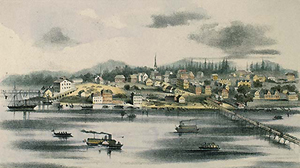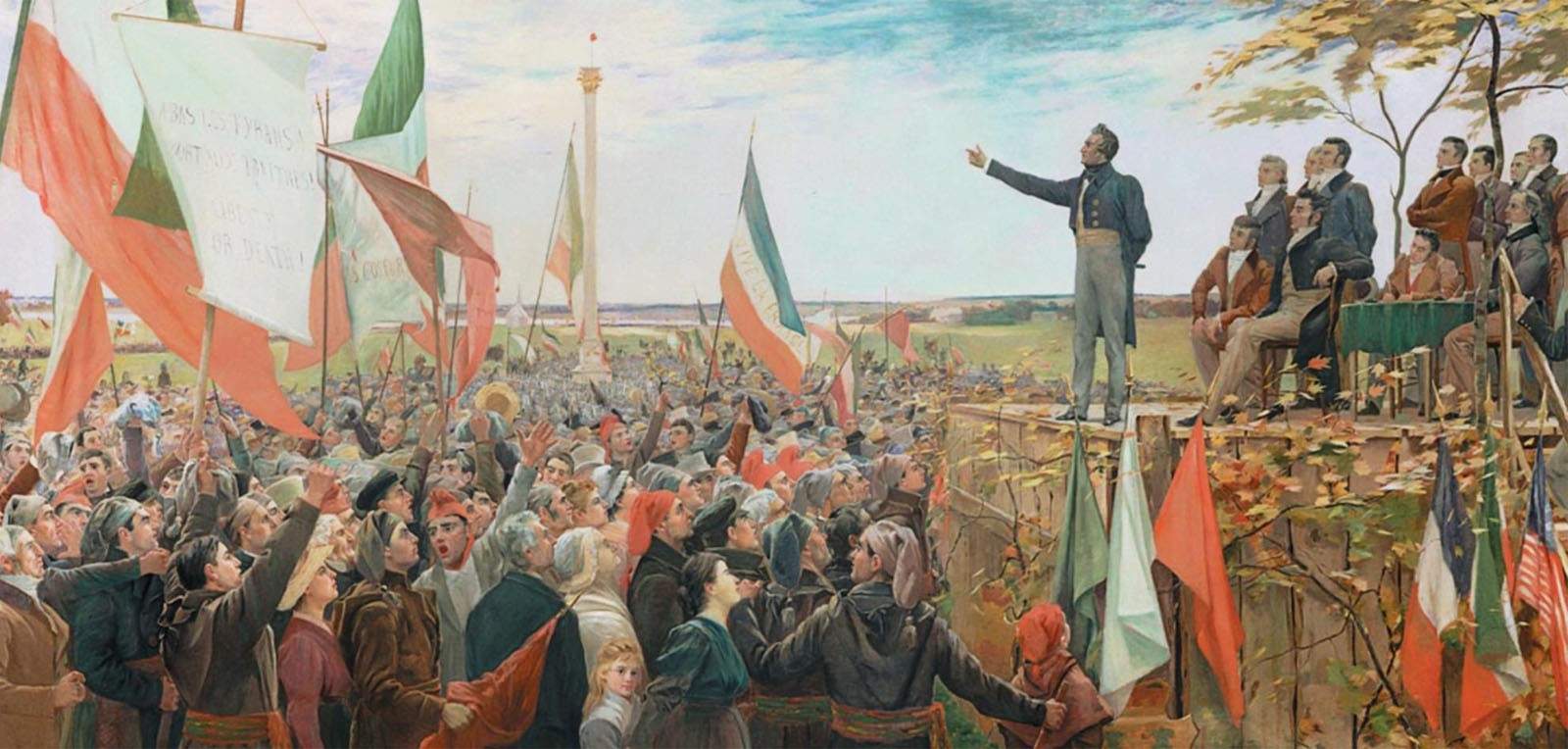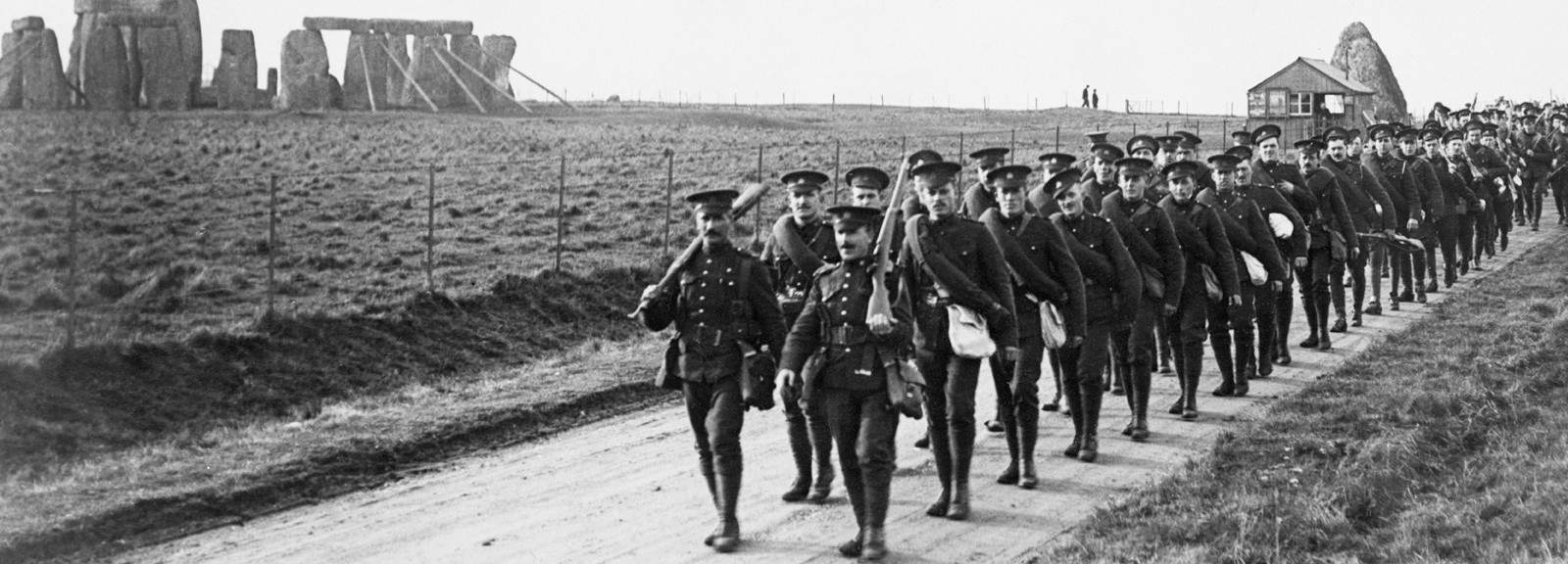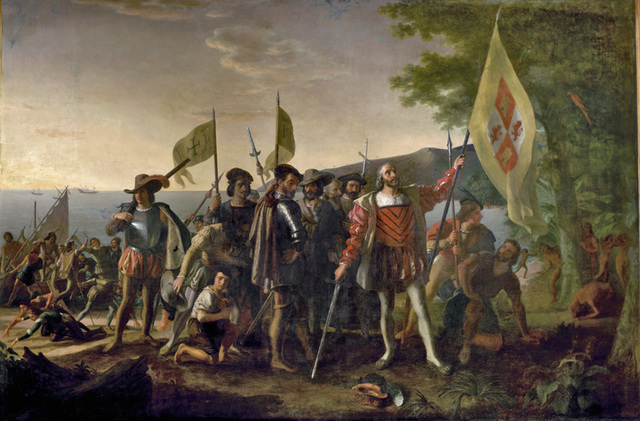THE DISCOVERY OF CANADA
The first people in Canada crossed the Bering Straits from Asia. In the north the Inuit lived by hunting seals, walruses and whales. They also hunted caribou. On the west coast people hunted deer, bear and beaver. They also fished. On the plains people lived by hunting buffalo. In the east people grew crops of beans, squash, maize and sunflower seeds.
The first Europeans to reach Canada were the Vikings. In 986 a Viking called Bjarni Herjolfsson was blown off course by a storm and he spotted a new land. However he sailed away without landing. In 1001 a man named Leif Eriksson landed in the new land, which he named Vinland (it was part of Canada). However Eriksson did not stay permanently. Later the Vikings did establish a colony in North America but they abandoned it because of conflict with the natives.
However after the Vikings Canada was forgotten until the end of the 15th century. In 1497 the English king Henry VII sent an Italian named Jean Cabot on an expedition across the Atlantic to Newfoundland. Cabot discovered rich fishing waters off the coast of Canada.
Then in 1534 and in 1535-36 a Frenchman named Jacques Cartier (1491-1557) sailed on two expeditions to Canada. On 10 August 1535 (St Lawrence's Day) he sailed into the St Lawrence River, which he named after the saint.
CANADA IN THE 17th CENTURY

However no permanent European settlements were made in Canada until the early 17th century. In 1603 a Frenchman named Samuel de Champlain (1567-1635) sailed up the St Lawrence River. In 1604 he founded Port Royal in Acadia (Nova Scotia). In 1608 de Champlain founded Quebec. (The name Quebec is believed to be an Algonquin word meaning a narrow part of a river). In 1642 the French founded Montreal. The new colony in Canada was called New France. By 1685 the population of New France was about 10,000. By 1740 it was 48,000.
In the early 17th century French missionaries such as the Jesuits attempted to convert the natives of Canada to Christianity - without much success. Meanwhile the French settlers traded with the natives for furs and farmed the land. Unfortunately they also brought European diseases like smallpox, to which the natives had no resistance.
However the English were also interested in Canada. In 1610 Henry Hudson discovered Hudson Bay. (In 1611 his crew mutinied and set him adrift). In 1631 Thomas James led another expedition. James Bay is named after him. Then in 1629 the English captured Quebec. However it was returned to France in 1632.
In 1670 the English founded the Hudson Bay Company. The company was given exclusive rights to trade with the inhabitants of the Hudson Bay area. They traded with the natives for skins and furs. Meanwhile rivalry between the British and the French in Canada continued.
CANADA IN THE 18th CENTURY

After the War of the Spanish Succession (1701-1713) France was forced to recognize British control of Hudson Bay and Newfoundland. The French were also forced to cede Nova Scotia to Britain.
However more conflict between Britain and France was inevitable. During the Seven Years War (1756-1763) the two nations fought for control of Canada. In 1758 the British captured the French fortress of Louisbourg on Cape Breton Island. Then in 1759 General Wolfe captured the city of Quebec. (Wolfe's victory at Quebec ensured that Canada would become British rather than French). Then in 1760 the British captured Montreal. Finally in 1763 the French were forced to surrender all their territories in Canada to Britain by the Treaty of Paris.
The British were then left with the problem of how to deal with the French Canadians. Wisely they decided to treat them gently and the Quebec Act of 1774 allowed the French Canadians to practice their own religion (Roman Catholicism). The French Canadians were also allowed to keep French civil law alongside British criminal law. By 1775 Canada had a population of about 90,000. The colony was flourishing.
When the American Revolution began in 1775 the Americans hoped the French Canadians would join them. However they were disappointed. An American army entered Canada in September 1775 and captured Montreal in November. However an attempt to capture Quebec in December failed and the American soldiers retreated in 1776.
After the American Revolutionary War about 40,000 Americans who remained loyal to Britain migrated from the newly independent country to Canada.
Then in 1791 the British parliament passed another act, which divided the Lawrence River Valley into two parts, Upper and Lower Canada. (Nova Scotia and New Brunswick were not affected).
Meanwhile exploration continued. George Vancouver (1757-1798) sailed along the west coast of Canada in 1791-94. Vancouver Island is named after him. Alexander Mackenzie (1755-1820) traveled from Great Slave Lake along the Mackenzie River and reached the Arctic Ocean in 1789. In 1793 he crossed the continent by land and reached the Pacific.
During the American War of 1812 the Americans invaded Canada but they were repulsed.
CANADA IN THE 19th CENTURY

Meanwhile in the early 19th century the population of Canada grew rapidly boosted by many migrants from Britain. A shipbuilding industry flourished in Canada and canals were built to help commerce.
However in the early 19th century many Canadians became dissatisfied with their government. In 1791 both Lower and Upper Canada were allowed an elected legislature. However the king appointed councils with executive powers. Yet both French and English speaking Canadians wanted a more democratic form of government.
Eventually in 1837 some Canadians rebelled. Louis Joseph Papineau led an uprising of French Canadians. However the rebellion was soon crushed. In Upper Canada William Lyon Mackenzie, who became the first Mayor of Toronto in 1834, led the insurrection. In 1837 he led an uprising, which was quickly crushed. Mackenzie himself was killed.
However Canada finally gained democratic government in 1867 when Ontario, Quebec, Nova Scotia and New Brunswick were federated as the Dominion of Canada. Canada then had a strong central government, which ruled from Ottawa, the new capital. The first prime minister of Canada was Sir John Macdonald.
Manitoba was made a province in 1870. British Columbia joined the confederation in 1871. Alberta and Saskatchewan joined in 1905.
In the late 19th century and the early 20th century the population of Canada grew rapidly. The Canadian economy also expanded rapidly helped by the spread of railways. A transcontinental railway, the Canadian Pacific Railway was completed in 1885.
Many Britons migrated to Canada and in the early 20th century many Eastern Europeans also migrated there. Vast areas of land were turned over to farming and manufacturing industries boomed.

Meanwhile in 1896 gold was found in the Klondike district of the Yukon and a gold rush ensued.
CANADA IN THE 20th CENTURY
More than 60,000 Canadian men died in the First World War. Meanwhile Manitoba was the first province of Canada to allow women to vote in provincial elections in 1916. Women in Canada were given the right to vote in federal elections in 1918. By 1925 all provinces except Quebec had granted women the right to vote in provincial elections. Quebec finally gave women that right in 1940.

The 1920s were, in general prosperous years for Canada. However like the rest of the world Canada suffered in the depression of the 1930s. Canada suffered from a huge drop in exports of timber, grain and fish. By 1933 unemployment had soared to 23%. The government introduced relief works but economic hardship continued throughout the 1930s. The depression only ended when the Second World War began in 1939. However during World War II 45,000 Canadians were killed.
In the late 20th century the population of Canada grew rapidly. In 1951 it was 16 million. By 1961 it had risen to 18 million. After 1945 people from Southern and Eastern Europe flocked to live in Canada. From the 1960s many immigrants came from South Asia.
Meanwhile during the 1950s and 1960s the Canadian economy boomed and Canada became an affluent society. Meanwhile television began in Canada in 1952. However things turned sour in the 1970s. In the early 1980s Canada suffered a deep recession and unemployment rose to 11%. There was another recession in the early 1990s. Yet Canada recovered.
In 1995 the people of Quebec voted in a referendum not to secede from Canada. Then in 1999 North West Territories was divided into two and a new territory called Nunavut was created.
Meanwhile in 1993 Kim Campbell became the first woman prime minister of Canada.
CANADA IN THE 21st CENTURY

Like other countries Canada suffered in the recession of 2009. However Canada soon recovered. In April 2012 unemployment in Canada stood at 8.1%. However by September 2013 it had fallen to 6.9%. Today Canada is a prosperous country and it has vast natural resources. Today the population of Canada is 35 million.

A TIMELINE OF THE HISTORY OF CANADA
1497 Jean Cabot sails to Newfoundland
1535 Jacques Cartier (1491-1557) sails into the St Lawrence River
1603 Samuel de Champlain (1567-1635) founds Port Royal
1608 de Champlain founds Quebec
1610 Henry Hudson discovers Hudson Bay
1642 The French found Montreal
1670 The English found the Hudson Bay Company
1685 The population of New France is about 10,000
1713 France is forced to recognize Hudson Bay and Newfoundland as British. They are also forced to cede Nova Scotia.
1740 The population of New France is about 48,000
1759 Wolfe captures Quebec
1760 The British capture Montreal
1763 The French are forced to surrender all their territory in Canada to Britain
1774 The Quebec Act allows French Canadians to keep their own religion and to keep their own criminal law
1775 Canada has a population of about 90,000. In November the Americans capture Montreal.
1776 The Americans retreat
1791 The Lawrence River Valley is divided into Upper and Lower Canada
1791-94 George Vancouver (1757-1798) sails along the west coast of Canada
1793 Alexander Mackenzie (1755-1820) crosses the continent by land and reaches the Pacific
1837 A rebellion takes place in Canada
1867 The Dominion of Canada is formed
1870 Manitoba is made a province
1885 The Canadian Pacific Railway is built
1896 Gold is discovered in the Klondike region of the Yukon
1918 Women are given the right to vote in federal elections
1921 Agnes Macphail becomes the first woman MP in Canada
1933 During the Depression unemployment in Canada reaches 23%
1939 Canada declares war on Germany
1952 Television begins in Canada
1993 Kim Campbell is the first woman prime minister of Canada
1999 North West Territories is divided into two and a new territory called Nunavut is created













